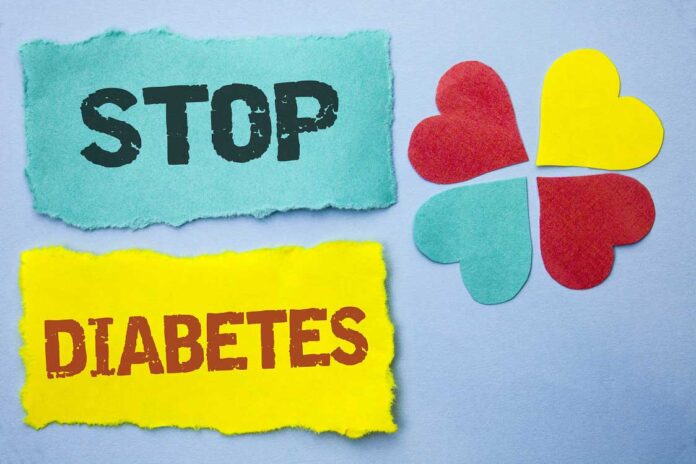An important marker for ພະຍາດເບົາຫວານ development has been identified.
ຮໍໂມນທີ່ ສຳ ຄັນສອງຊະນິດທີ່ຜະລິດຢູ່ໃນ ໝາກ ໄຂ່ຫຼັງ - ກລູກອນ ແລະ insulin - ການຄວບຄຸມທີ່ເຫມາະສົມ glucose ລະດັບການຕອບສະຫນອງຕໍ່ອາຫານທີ່ພວກເຮົາບໍລິໂພກ. Glucagon ເພີ່ມການຜະລິດນໍ້າຕານໃນຕັບ (HGP) ແລະ insulin ຫຼຸດລົງ. ພວກເຂົາທັງສອງຄວບຄຸມ homeostasis glucose ໃນເລືອດ. ໃນເວລາທີ່ພວກເຮົາຖືສິນອົດເຂົ້າ, glucagon ຈະລັບອອກຈາກຈຸລັງຂອງ pancreas ເພື່ອເພີ່ມລະດັບນໍ້າຕານໃນເລືອດໃນຮ່າງກາຍເພື່ອປົກປ້ອງຮ່າງກາຍຈາກສະພາບທີ່ເອີ້ນວ່າ hypoglycemia ເຊິ່ງເຮັດໃຫ້ລະດັບນໍ້າຕານໃນເລືອດຫຼຸດລົງຢ່າງຫຼວງຫຼາຍແລະເຮັດໃຫ້ເກີດອາການຕ່າງໆ. Glucagon ແມ່ນມີສ່ວນຮ່ວມໃນການພັດທະນາ hyperglycemia ຂອງພະຍາດເບົາຫວານເມື່ອການຜະລິດນໍ້າຕານໃນຕັບ (HGP) ເພີ່ມຂຶ້ນ. Insulin ສະກັດກັ້ນການຜະລິດ glucose ໂດຍຜ່ານ transcriptional ປົກກະຕິໃນ ຕັບ cells. A protein called Transcription factor Foxo1 plays an important role in regulating expression of genes and promoting HGP by increasing expression of genes which are responsible for production of glucose. Disruption of proper HGP is understood as a key primary mechanism for development of Type 2 ພະຍາດເບົາຫວານ.
ໃນການສຶກສາຕີພິມໃນ ພະຍາດເບົາຫວານ, researchers from Texas A&M University USA set out to understand the role of Foxo1 in how glucagon regulates HGP. They wanted to better understand the fundamentals of blood glucose homeostasis and pathogenesis of diabetes. Glucagon does its function by binding to a GPCR receptor, stimulating the cell membrane to activate protein kinase A which then signals gene expression to increase blood glucose. The levels of glucagon are extremely high in humans with ພະຍາດເບົາຫວານ and this stimulates excess production of HGP.
Researchers investigated Foxo1 regulation through phosphorylation i.e. attachment of a phosphoryl group. Phosphorylation is an important part of protein function and is responsible for activating or deactivating almost 50 percent of enzymes present in our body, and thereby regulating their function. Researchers used mice model and gene editing to generate Foxo1 ‘knock in’ mice. Foxo1 was stabilised in ຕັບ of mice (who were fasting) when insulin was decreased and glucagon increased in the bloodstream. The study clearly showed that if hepatic Foxo1 was deleted, hepatic glucose production (HGP) and blood glucose was decreased in mice. Thus, a novel mechanism has been identified for the first time in which Foxo1 mediates glycogen signalling via phosphorylation in order to control blood glucose.
Foxo1 is an important protein that acts as a mediator for various pathways integrating hormones and other proteins to control insulin sensitivity. Since high glucagon levels are present both in Type 1 and Type 2 ພະຍາດເບົາຫວານ, Foxo1 will play an important role in the fundamental mechanism leading to diabetic hyperglycaemia. The study suggests that glucagon mediated HGP can be a potential therapeutic intervention for control and also possible prevention of ພະຍາດເບົາຫວານ.
***
{ທ່ານສາມາດອ່ານເອກະສານການຄົ້ນຄວ້າຕົ້ນສະບັບໄດ້ໂດຍການຄລິກທີ່ລິ້ງ DOI ທີ່ໃຫ້ໄວ້ຂ້າງລຸ່ມນີ້ໃນລາຍຊື່ແຫຼ່ງທີ່ອ້າງອີງ}
ແຫຼ່ງຂໍ້ມູນ (s)
Yuxin W et al. 2018. Novel Mechanism of Foxo1 Phosphorylation in Glucagon signaling in control of Glucose Homeostasis.ພະຍາດເບົາຫວານ. 67(11). https://doi.org/10.2337/db18-0674
***






































